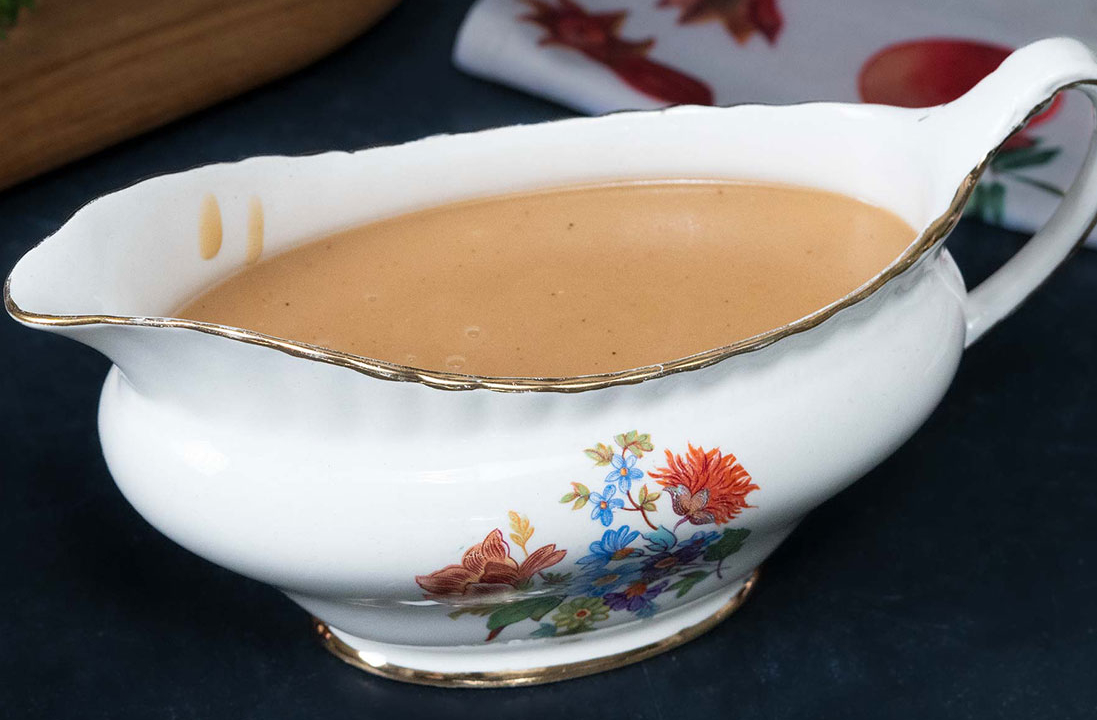Learn how to thicken sauces
ARGIRO BARBARIGOU

We love sauces in all their forms, and we want our sauces to be thick and luscious!
Thickening a sauce is a technique used to add body, texture, and density. In addition to boiling for reduction, there are a few other methods that help thicken a sauce properly.
Reduction (Réduction)
Thickening a sauce without flour is achieved by reducing it—boiling it over high heat until it thickens and large bubbles form on the surface. In culinary terms, this technique of thickening a sauce or soup is called a liaison.
Thickening with puréed vegetables
Boiling a sauce that contains vegetables and then puréeing them at the final stage can effectively thicken a sauce or soup. However, this method has one drawback: if the consistency isn’t dense enough and the sauce sits for too long, the liquid may separate.
Thickening with fruit
Fruits like apples, pears, and bananas can be puréed and incorporated into sweet sauces, providing natural thickness.
Thickening with flour
- Using starches such as flour, cornstarch, or semolina. Starch has a high absorption rate and thickening power, making it ideal for sauces and soups.
- Raw or toasted flour can be used either before browning the meat (by dredging the meat in flour) or during cooking (sprinkled lightly over the ingredients). Boiling helps the flour thicken and bring the sauce together.
- Mix flour with soft butter to make a paste. Add spoonfuls of this mixture to a simmering sauce or soup. Stir until fully dissolved, and the sauce will thicken.
- The roux technique: flour and butter cooked together, just like in the initial stage of making béchamel. Melt the butter, add the flour, and cook while stirring. Let the roux cool, then add spoonfuls to a sauce or soup you want to thicken. Store leftover roux in a glass container in the fridge. For example, to thicken a broth from stuffed cabbage rolls, make a roux and stir in some of the cooking liquid, whisking continuously until it thickens.
Thickening with cornstarch
Dissolve a bit of cornstarch in cold water and slowly pour it into a simmering sauce or soup while stirring. As it cooks, the sauce will lightly thicken.
Thickening with semolina
Add a light dusting of fine semolina to a sauce. Semolina absorbs excess liquid and helps the sauce set. Use fine semolina so it blends in smoothly.
Thickening sauces without flour or starch
Thickening with egg
- A French technique for thickening sauces, the egg liaison, is essentially the method behind the traditional avgolemono. Keep in mind: if the sauce exceeds 70°C (160°F) and starts to boil, the egg will curdle. After adding the egg, do not allow it to boil. If you’re planning to reheat a dish with egg-thickened sauce, it’s best to mix a spoonful of cornstarch into the avgolemono. This helps the sauce hold together during reheating and prevents curdling.
- To thicken a sauce with just egg yolk, beat the yolk with a bit of hot liquid from the sauce, then stir it back in after removing the pan from the heat. Alternatively, combine the yolk with a little cream and stir into the warm sauce once it’s off the heat.
For plant-based recipes, you can use tahini, avocado, or nut butters as thickeners. These ingredients give sauces a rich and velvety texture.